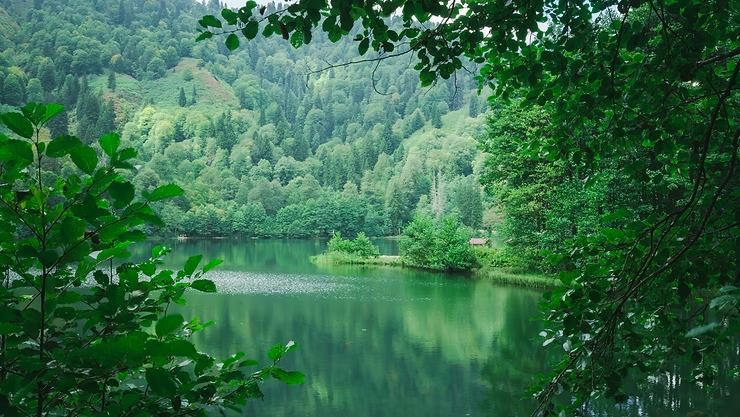The Amazon Rainforest: A Natural Wonder
The Amazon rainforest is the largest rainforest in the world, spanning 5.5 million square kilometers. It is a biodiversity hotspot, home to thousands of plant and animal species, and plays a crucial role in regulating the Earth’s climate.
Key Takeaways
- The Amazon is the largest rainforest globally, rich in plant and animal diversity.
- Deforestation threatens its ecosystems and contributes to climate change.
- Indigenous communities rely on the rainforest for livelihood and preserve its cultural heritage.
- Unique wildlife includes jaguars, pink river dolphins, and giant anacondas.
- The Amazon River supports an extensive ecosystem and is the longest river in South America.
The Size and Scope of the Amazon
Covering an area roughly the size of the United States, the Amazon is home to over 40,000 plant species, 1,300 bird species, 3,000 types of fish, and countless other animals. Known as the ‘Lungs of the Earth,’ it produces 20% of the world’s oxygen.
Biodiversity Hotspot
The Amazon Rainforest is packed with life, including exotic birds, mammals, reptiles, and insects. Scientists continue to discover new species, highlighting the forest’s immense ecological value.
Indigenous Peoples of the Amazon
Over 400 indigenous tribes inhabit the Amazon, living sustainably with deep knowledge of medicinal plants and rainforest ecology. Their traditional practices are vital in preserving biodiversity and combating deforestation.
Threats to the Amazon Rainforest
Deforestation
Clearing land for agriculture and development results in habitat loss, biodiversity decline, and increased carbon emissions. Sustainable farming and reforestation are essential to mitigate these impacts.
Illegal Logging and Mining
Unauthorized logging and mining destroy habitats and pollute ecosystems. Combating these activities requires stricter regulations, law enforcement, and support for sustainable alternatives for local communities.
Climate Change and Drought
Changing rainfall patterns and rising temperatures increase the frequency of droughts and forest fires, threatening wildlife and indigenous communities. Reducing emissions and restoring forests are key strategies for protection.
Unique Wildlife of the Amazon
Jaguar: The King of the Amazon
Jaguars are apex predators with powerful jaws and rosette-patterned coats. They are excellent swimmers and hunt a variety of prey, including fish and caimans.
Pink River Dolphin
Also called boto, these freshwater dolphins are pink, intelligent, and playful. They play a vital role in maintaining the Amazon river ecosystem.
Giant Anaconda
While legendary stories describe massive anacondas, the green anaconda is the largest snake by weight. True “giant” anacondas remain largely mythical.
Medicinal Plants of the Amazon
- Curare: A potent poison used by indigenous hunters on darts and arrows.
- Cat’s Claw: A vine with immune-boosting, anti-inflammatory, and antioxidant properties.
- Dragon’s Blood: A healing resin used for wounds, infections, and skincare.
Traditional Amazonian Cuisine
- Açaí Bowl: Nutritious breakfast made from antioxidant-rich açaí berries with fruit and granola.
- Piranha Soup: Local delicacy made from piranha fish, herbs, and spices.
- Tucupi: Tangy fermented manioc sauce used in soups and traditional dishes.
The Amazon River: Lifeblood of the Rainforest
The Amazon River stretches over 6,400 kilometers and supports a diverse ecosystem, including pink river dolphins and thousands of fish species. River cruises, fishing, and jungle exploration offer unique ways to experience the rainforest.
Exploring the Amazon
- Canopy Tours: Zipline adventures offering a bird’s-eye view of the rainforest.
- River Cruises: Explore remote areas and observe wildlife with expert guides.
- Jungle Trekking: Immerse yourself in nature while spotting unique flora and fauna.
In Conclusion
The Amazon rainforest is a global treasure, essential for biodiversity, climate regulation, and cultural heritage. Preserving it is critical for the planet’s future.
Frequently Asked Questions
- Size of the Amazon rainforest: Approximately 5.5 million square kilometers.
- Why is it a biodiversity hotspot? Home to unique species found nowhere else on Earth.
- Main threats: Deforestation, illegal logging/mining, and climate change.
- Jaguars in the Amazon? Yes, they are apex predators of the rainforest.
- Pink river dolphin? Freshwater dolphin species, native to the Amazon.
- Giant anacondas exist? Green anacondas exist; “giant” ones are mostly mythical.
- Curare? Poison traditionally used by indigenous hunters.
- Cat’s claw? Medicinal vine with immune-boosting properties.

